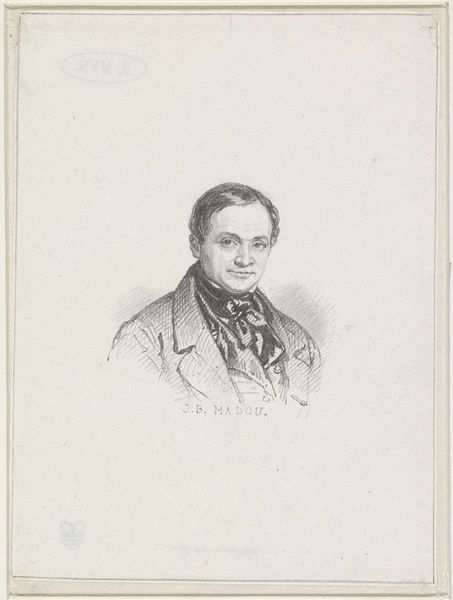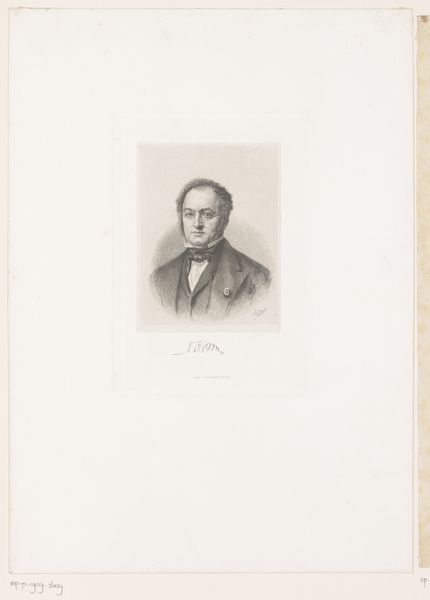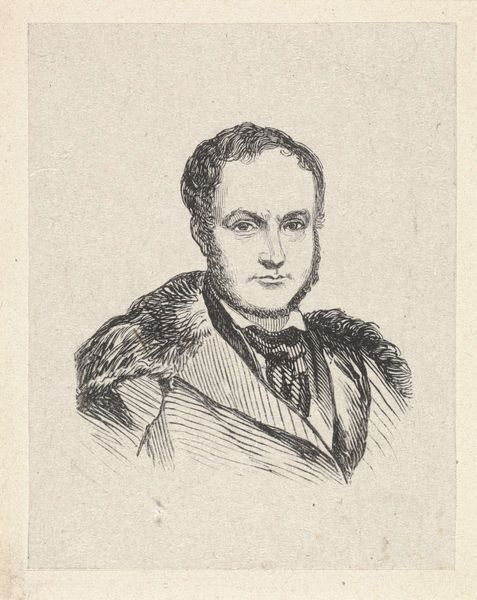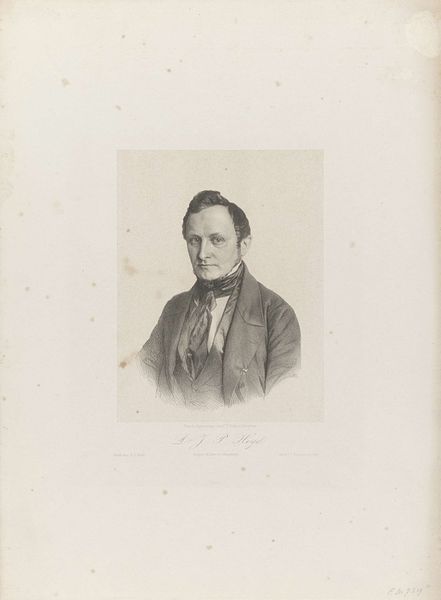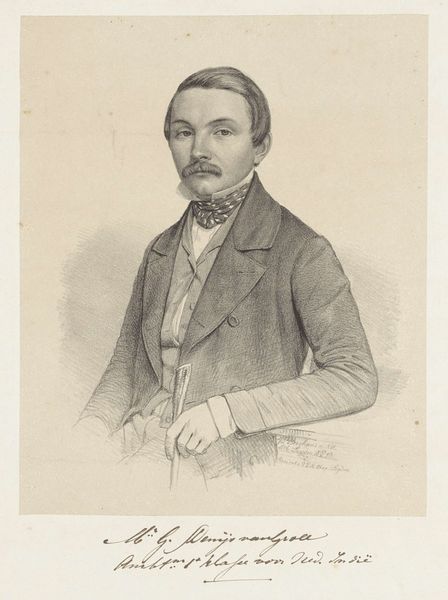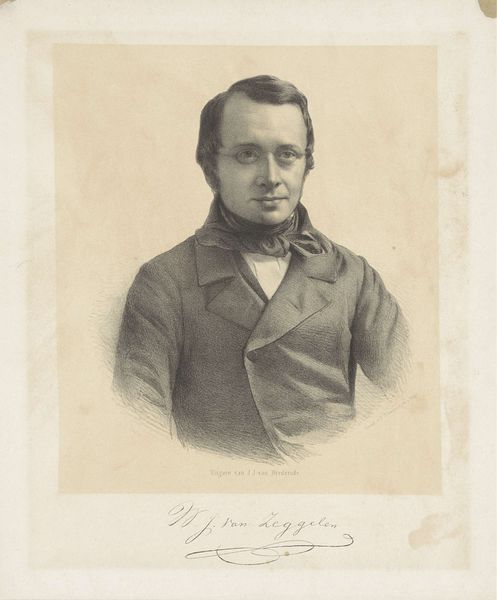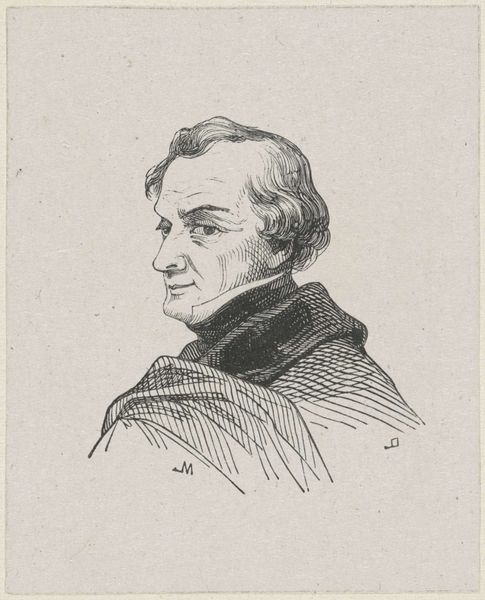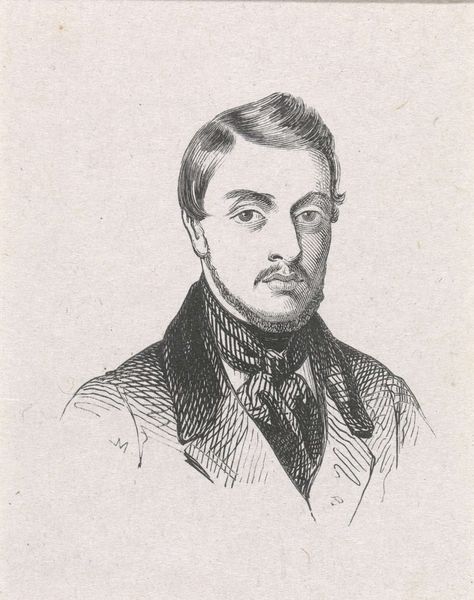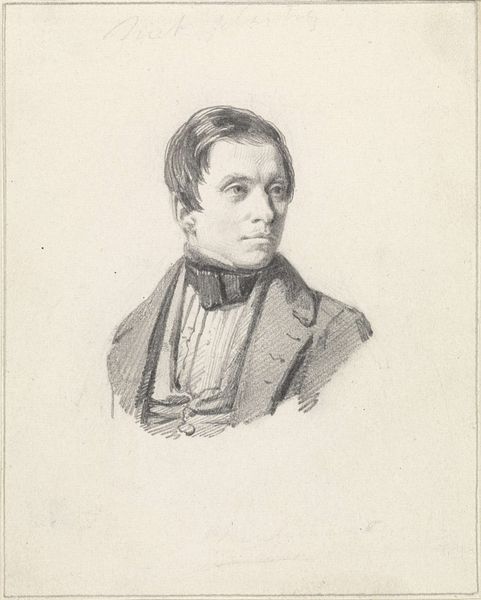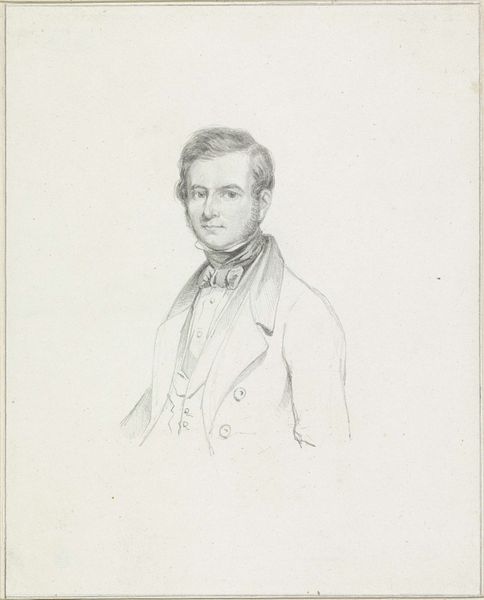
Dimensions: height 70 mm, width 55 mm
Copyright: Rijks Museum: Open Domain
Curator: This is "Portret van Jean Baptiste Madou," a pencil and print artwork dating from around 1806 to 1927, found here in the Rijksmuseum collection. Editor: My immediate impression is one of constraint, actually. The man’s tightly knotted tie, the rigid hatching of the pencil lines…it feels formal, but also slightly…unfinished. Curator: Absolutely, the formal constraint reflects the Romantic era’s engagement with the individual, the internal life writ small, literally, in the lines of the face. Notice the precise depiction of his gaze; it evokes an introspective mood characteristic of portraits intended to capture the subject's essence beyond mere appearance. Editor: But what about the materiality itself? Pencil drawings and prints, especially in multiples, democratized portraiture. Consider the shift from oil on canvas – symbols of wealth and status. Here, we see a much more accessible medium, reaching potentially wider audiences. Think of the socio-economic impact! Curator: That’s a great point about accessibility, it allowed for greater circulation of imagery, which played into burgeoning nationalism and celebrity culture even then. As for symbolism, it's more nuanced here. It isn't blatant iconography, but it invites contemplation on character and temperament. Editor: I'm also fascinated by the blurring of timelines suggested by that wide date range! This speaks volumes to artistic practice, how copies and reiterations gain new meaning across periods of material conditions, tastes, and audiences. Each new printing affects value differently based on those factors. Curator: That tension between reproducibility and artistic intention is critical. Perhaps we see reflected there an emerging visual culture that could cheaply distribute knowledge about artists while shaping concepts of self-fashioning for the masses through readily available items such as prints and drawings. Editor: Ultimately, what captivates me are those visible material remnants that expose history through their texture or the variations, where production marks reveal a world about access and dissemination more than just “high” artistry intended only for elite consumption. Curator: So, a convergence, then: that the soul could be captured in any art, reproduced or not. In short: This portrait offers a small peek at shifts to both seeing ourselves, but also how people consumed such imagery broadly. Editor: A good way to characterize a print designed, perhaps, more to propagate than represent!
Comments
No comments
Be the first to comment and join the conversation on the ultimate creative platform.
